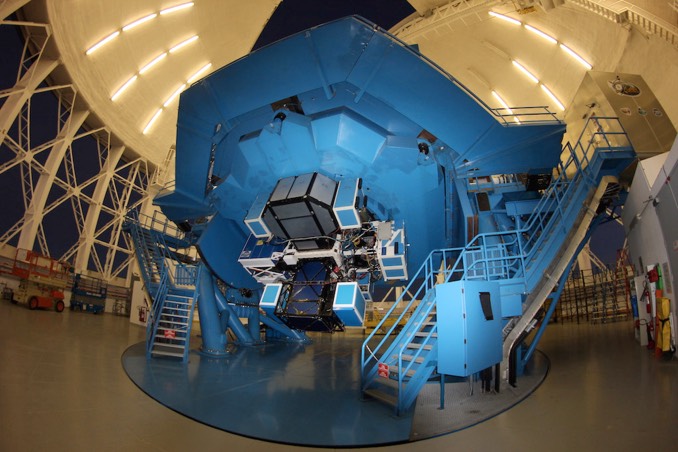
The Gemini Planet Imager instrument attached to the 8-metre Gemini South telescope in Chile is wrapping up a four-year survey of 531 young, relatively nearby stars in search of giant exoplanets. Analysis is ongoing, but half of the collected data, representing 300 stars, indicates giant planets around Sun-like stars may be rare.
If confirmed, the findings, to be published in The Astrophysical Journal, would have implications for the development of life on terrestrial planets orbiting such stars.
“We suspect that in our solar system Jupiter and Saturn sculpted the final architecture that influences the properties of terrestrial planets such as Mars and Earth, including basic elements for life such as the delivery of water, and the impact rates,” said Franck Marchis, a senior researcher at the SETI Institute and a co-author of the paper.
“A planetary system with only terrestrial planets and no giant planets will probably be very different to ours, and this could have consequences on the possibility for the existence of life elsewhere in our galaxy.”
More than 4,000 exoplanets have now been identified to date, the vast majority found by measuring the slight dimming of a star’s light as a planet moves in front of its sun – the planetary transit method – or by observing the minuscule wobble of a star – changes in radial velocity – caused by an orbiting planet’s gravity.

Both techniques favour detection of planets orbiting relatively close to their suns. But the Gemini Planet Imager, or GPI, was designed to directly image giant planets by blocking out the light of a nearby host star and using sophisticated adaptive optics to counteract atmospheric turbulence.
Previous observations indicated giant planets more typically form around higher-mass stars and based on statistics, researchers expected to find about a dozen such worlds in the first 300 stars surveyed. But they only found six.
As it turned out, 123 of the stars sampled were more than 1.5 times more massive than the Sun. And all six of the planets detected in the survey orbited those higher-mass stars.
The GPI is not sensitive to planets Jupiter’s size or smaller, but the new observations, along with the observed prevalence of high-mass planets around stars more massive than the Sun, indicate Earth’s solar system, with the presence of Jupiter and Saturn, may not be typical.
“If this finding is confirmed after analysing the rest of the survey data, and more surveys from ground- and space-based telescopes to come, it will have an impact on our understanding of the existence of life on terrestrial planets” said Marchis. “That’s ultimately the raison d’etre of those surveys, to understand how planetary system formed and what kind of life could exist elsewhere.”



